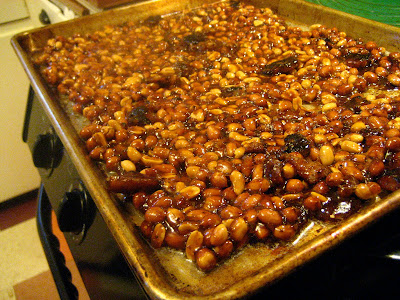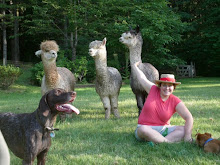Actually, it has been awhile since I've indulged, and I'm not counting a really weird and scary version of bbq brisket nachos at Esparza's restaurant because I should not have even gone there in the first place.
Last night the Golden Globes were on TV. Which means I spent 2 days thinking about what I wanted to make for myself and my roommate while we get drunk and efface celebrities. Even though every fiber of my being wanted to make a giant tray of nachos authentico, I resisted the temptation because, well, I am training to run a half marathon and I think it would go a little easier if I lost a few pounds rather than packed them on. My knees would appreciate it. With enough ingredients lying around to only warrant the purchase of an avocado and a head of lettuce, I concocted a mildly healthy chopped salad that satisfied almost every nacho-craving impulse and left me with no regrets. No regrets over the food, at least.
Nacho Salad
serves 4
6 cups crisp romaine lettuce, washed and chopped into 1-inch pieces
2 tomatoes, diced
1/2 cup pickled onions (see below), chopped
6 radishes, diced
1/2 cup grated cheddar cheese (or, let's be honest, more)
1/2 large avocado, diced
small handful tortilla chips (I julienned and fried up a couple corn tortillas)
optional: sliced pickled jalapenos, black olives, more cheese...
+++
for the pickled onion
1 yellow onion, thinly sliced
1/2 cup white vinegar
1 T kosher salt
1/2 tsp sugar
1/2 tsp whole cumin seeds, toasted
a few hours ahead of salad time, place onions in a bowl and bring a pot of water to boil. Pour boiling water over onions and then immediately drain. Return onions to bowl and combine with the rest of the ingredients. Cover with plastic wrap and toss--refrigerate until ready to use. Will keep, refrigerated, for several weeks.
+++
for the seared beef:
10-16 oz round steak or other lean cut.
1 tsp ground chile powder (I use ground New Mexico chile)
1/2 tsp cumin
salt and pepper
2-24 hours prior, pat steak dry with paper towel and season with spices and plenty of salt and pepper. Refrigerate, but bring to room temperature 30 minutes before cooking. Heat a heavy-duty skillet on a high burner and drizzle a little oil on the pan. Might want to turn on your exhaust fan at this point. When the oil starts smoking, sear the steak. I like about 3 min per side for a 3/4 to 1-inch thick steak to cook medium rare. Remove from heat and let the steak rest while you put the rest of the salad together.
+++
chipotle and sour cream dressing:
1 garlic clove, minced
salt & pepper
juice of one lime, about 2 T
1 chipotle from a can, chopped
2-4 T sour cream
2-4 T olive oil
Place garlic in bowl, sprinkle on salt, chipotle and lime juice, let sit 10 minutes.
To Assemble: When steak is rested, slice thinly against the grain and toss in a large bowl with the rest of the salad ingredients. Add dressing to taste. garnish with some extra tortillas if you're feeling indulgent.

I forgot to art direct the salad and take a photo, but it was too good to not capture, along with the award for Best Actress in a Comedy or Musical.








